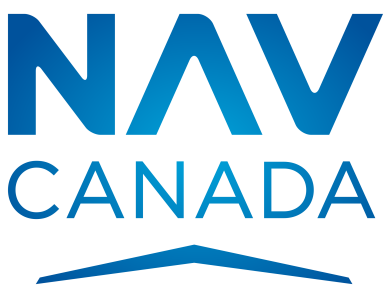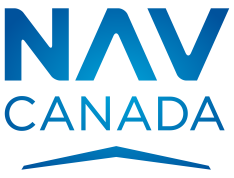



How do we progress digitalisation at the industry level? Are we always limited by the lowest common denominator?
Having been involved in aviation for 20-plus years, I've seen a significant shift in recent times towards digitalisation and embracing technology in operations. I think the change was during COVID-19. This quote by Clayton Christensen is especially true for me: “The breakthrough innovations come when the tension is greatest, and the resources are most limited”.
The pandemic gave the entire industry a wake-up call and I feel we saw a marked change in people’s willingness to collaborate and share information for the common good.
In terms of the pace of change, less than 10 years ago I said at a conference that “ANSP's move at glacial pace”, only for someone from the audience to say, “We don't move that fast”. Thankfully, that is changing within the constraints that we have caused by the safety criticality of our business.
As an industry, we will never be leading edge, but we are working hard to becoming fast followers. Yes, our infrastructure is ageing, and we need to modernise, but technologies are coming to the market that allow us to re-imagine ATM.
Probably the best example there is at the moment, is space-based ADS-B. Canada has 18 million square kilometres of airspace and having traditional surveillance cover is impractical. And that is without considering the extreme weather we get, which is extremely challenging for our ground-based equipment.
Low Earth Orbit (LEO) communications is another example. As our systems become more connected, we need faster and more resilient communication links. In Canada, this is problematic due to the sheer size of the country and the cost to bury fibre with a relatively low population density.
Companies are now coming to market that offer industrialised LEO communications, effectively giving us fibre speeds. This enables us to have more resilience and the ability to provide enhanced services at all locations.
One other consideration is satellite VHF. Although still very much in development, this technology, once operationalised, will give us global connectivity and increased resiliency, enabling us to treat the north Atlantic like any other part of Canadian airspace.
What are the longer-term prospects for AI and automation?
There is no doubt that AI has the potential to radically change our industry by enhancing safety, improving efficiency, and allowing us to do that while accommodating the demands of future air traffic growth.
I wish I knew what that looked like in reality and when society will make the shift to feeling comfortable with autonomous systems. It's my belief that human controllers will remain involved in the decision-making process but with AI algorithms automating certain aspects of air traffic control, such as routine tasks and maybe even basic traffic management. This would free up human controllers to focus on more complex situations and improve overall system efficiency.
It would be remiss of me not to recognise, though, that we have significant challenges ahead of us with AI, including cybersecurity, intellectual property, data privacy, regulatory compliance, and public acceptance of AI-driven systems. Addressing these challenges will be essential for realising the full potential of AI in ATM while ensuring safety and security.
Where will artificial intelligence play a role in the short-term?
I've never seen anything that is a better example of being at the peak of expectations as artificial intelligence (AI) is right now, and rightly so. The possibilities are endless, and it will undoubtedly change our lives, never mind our industry over the coming years.
One of the challenges will be staying focused and implementing for the right reasons and not technology for technology’s sake which, arguably, is what we saw when big data was at its peak of expectations.
In the short term, within an ANSP, I see AI being used to increase the productivity of the non-operational and corporate staff, assisting them with software development, testing, data analysis, hiring and really any other function you can think of.
Taking that a step further, just imagine using AI to give us the ability to predict and avoid safety incidents before they happen. At NAV CANADA, we are focused on exactly this and specifically decision support and training. Both are incredibly exciting and are on track to deliver significant business benefits, allowing us to run an operation optimised for safety and capacity and to increase the ATC training pass rate and so reduce the time from street to seat.
I see this trend of augmentation of the operational staff continuing for the short to medium term as the technology matures and society gets more and more comfortable with the ever-expanding role, whatever that will be, of AI.
What do you look for in new technology? Is it about reducing costs, a return on investment, improving procedures for airspace users or building a platform for future developments? What is your list of priorities?
All the above. Although price is always a factor, our focus is very much aligned to our company's purpose, which is 'Keeping Canada's Skies Safe, Shaping the Future of Air Navigation Services'.
We also have five strategic priorities that guide us that include transforming for customer value and partnering for success. As we look at new technology, we take a multi-faceted approach to any evaluation, ensuring we understand the benefits both internally to NAV CANADA and externally to our customers.
Focusing solely on price without recognition of the customers benefits would, in our view, yield the wrong outcome for the industry. We passionately believe that aviation is an ecosystem that must exist as one and we need to work in collaboration with our aviation partners to safely deliver better on-time performance and reduced emissions.
What does the Alliance give you beyond interfacing? In other words, does digitalisation always need to be interoperable?
The value of our membership of the iTEC collaboration goes far beyond the actual solution. By starting to work with like-minded ANSPs, all of which have the same challenges as us, we hope to share in lessons learned, share ideas and to transform together.
As we started to get involved with iTEC, and as we started discussing challenges and future strategies, we found a great alignment with all the other ANSPs. To mention Avinor as an example, in both Norway and Canada aviation is essential to reach remote areas. It's simply just not practical by road or rail. We also have an aligned vision on digital hubs serving multiple towers and flight service stations and we both have busy terminal areas that connect the country.
How important is the iTEC Alliance to NAV CANADA's future?
NAV CANADA has a proud history of innovation with numerous world firsts, including electronic flight strips and space-based automatic dependent surveillance – broadcast (ADS-B).
As we look forward, technology is advancing at such an unprecedented pace that we cannot continue to work alone developing all our own systems and expect to keep up. We need to focus the exceptional resources we have in the right place and look for partners to work with us to achieve our ambitious plans for trajectory-based operations (TBO), digital facilities and airspace modernisation.
iTEC is the first part of this puzzle, bringing us into partnership with seven other air navigation service providers (ANSPs) and a strong technology partner in Indra. iTEC will serve as the foundation for our TBO deployment and enable us to accelerate the benefits it brings to our airline partners, to the environment and to the economy of Canada.



Vice President, Chief Technology and Information Officer, NAV CANADA
Mark Cooper





Vice President, Chief Technology and Information Officer, NAV CANADA

Mark Cooper


NAV CANADA has a proud history of innovation with numerous world firsts, including electronic flight strips and space-based automatic dependent surveillance – broadcast (ADS-B).
As we look forward, technology is advancing at such an unprecedented pace that we cannot continue to work alone developing all our own systems and expect to keep up. We need to focus the exceptional resources we have in the right place and look for partners to work with us to achieve our ambitious plans for trajectory-based operations (TBO), digital facilities and airspace modernisation.
iTEC is the first part of this puzzle, bringing us into partnership with seven other air navigation service providers (ANSPs) and a strong technology partner in Indra. iTEC will serve as the foundation for our TBO deployment and enable us to accelerate the benefits it brings to our airline partners, to the environment and to the economy of Canada.
How important is the iTEC Alliance to NAV CANADA's future?
The value of our membership of the iTEC collaboration goes far beyond the actual solution. By starting to work with like-minded ANSPs, all of which have the same challenges as us, we hope to share in lessons learned, share ideas and to transform together.
As we started to get involved with iTEC, and as we started discussing challenges and future strategies, we found a great alignment with all the other ANSPs. To mention Avinor as an example, in both Norway and Canada aviation is essential to reach remote areas. It's simply just not practical by road or rail. We also have an aligned vision on digital hubs serving multiple towers and flight service stations and we both have busy terminal areas that connect the country.
What does the Alliance give you beyond interfacing? In other words, does digitalisation always need to be interoperable?
All the above. Although price is always a factor, our focus is very much aligned to our company's purpose, which is 'Keeping Canada's Skies Safe, Shaping the Future of Air Navigation Services'.
We also have five strategic priorities that guide us that include transforming for customer value and partnering for success. As we look at new technology, we take a multi-faceted approach to any evaluation, ensuring we understand the benefits both internally to NAV CANADA and externally to our customers.
Focusing solely on price without recognition of the customers benefits would, in our view, yield the wrong outcome for the industry. We passionately believe that aviation is an ecosystem that must exist as one and we need to work in collaboration with our aviation partners to safely deliver better on-time performance and reduced emissions.
What do you look for in new technology? Is it about reducing costs, a return on investment, improving procedures for airspace users or building a platform for future developments? What is your list of priorities?
Having been involved in aviation for 20-plus years, I've seen a significant shift in recent times towards digitalisation and embracing technology in operations. I think the change was during COVID-19. This quote by Clayton Christensen is especially true for me: “The breakthrough innovations come when the tension is greatest, and the resources are most limited”.
The pandemic gave the entire industry a wake-up call and I feel we saw a marked change in people’s willingness to collaborate and share information for the common good.
In terms of the pace of change, less than 10 years ago I said at a conference that “ANSP's move at glacial pace”, only for someone from the audience to say, “We don't move that fast”. Thankfully, that is changing within the constraints that we have caused by the safety criticality of our business.
As an industry, we will never be leading edge, but we are working hard to becoming fast followers. Yes, our infrastructure is ageing, and we need to modernise, but technologies are coming to the market that allow us to re-imagine ATM.
Probably the best example there is at the moment, is space-based ADS-B. Canada has 18 million square kilometres of airspace and having traditional surveillance cover is impractical. And that is without considering the extreme weather we get, which is extremely challenging for our ground-based equipment.
Low Earth Orbit (LEO) communications is another example. As our systems become more connected, we need faster and more resilient communication links. In Canada, this is problematic due to the sheer size of the country and the cost to bury fibre with a relatively low population density.
Companies are now coming to market that offer industrialised LEO communications, effectively giving us fibre speeds. This enables us to have more resilience and the ability to provide enhanced services at all locations.
One other consideration is satellite VHF. Although still very much in development, this technology, once operationalised, will give us global connectivity and increased resiliency, enabling us to treat the north Atlantic like any other part of Canadian airspace.
How do we progress digitalisation at the industry level? Are we always limited by the lowest common denominator?
There is no doubt that AI has the potential to radically change our industry by enhancing safety, improving efficiency, and allowing us to do that while accommodating the demands of future air traffic growth.
I wish I knew what that looked like in reality and when society will make the shift to feeling comfortable with autonomous systems. It's my belief that human controllers will remain involved in the decision-making process but with AI algorithms automating certain aspects of air traffic control, such as routine tasks and maybe even basic traffic management. This would free up human controllers to focus on more complex situations and improve overall system efficiency.
It would be remiss of me not to recognise, though, that we have significant challenges ahead of us with AI, including cybersecurity, intellectual property, data privacy, regulatory compliance, and public acceptance of AI-driven systems. Addressing these challenges will be essential for realising the full potential of AI in ATM while ensuring safety and security.
What are the longer-term prospects for AI and automation?
I've never seen anything that is a better example of being at the peak of expectations as artificial intelligence (AI) is right now, and rightly so. The possibilities are endless, and it will undoubtedly change our lives, never mind our industry over the coming years.
One of the challenges will be staying focused and implementing for the right reasons and not technology for technology’s sake which, arguably, is what we saw when big data was at its peak of expectations.
In the short term, within an ANSP, I see AI being used to increase the productivity of the non-operational and corporate staff, assisting them with software development, testing, data analysis, hiring and really any other function you can think of.
Taking that a step further, just imagine using AI to give us the ability to predict and avoid safety incidents before they happen. At NAV CANADA, we are focused on exactly this and specifically decision support and training. Both are incredibly exciting and are on track to deliver significant business benefits, allowing us to run an operation optimised for safety and capacity and to increase the ATC training pass rate and so reduce the time from street to seat.
I see this trend of augmentation of the operational staff continuing for the short to medium term as the technology matures and society gets more and more comfortable with the ever-expanding role, whatever that will be, of AI.
Where will artificial intelligence play a role in the short-term?